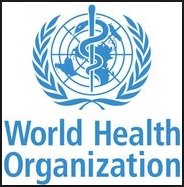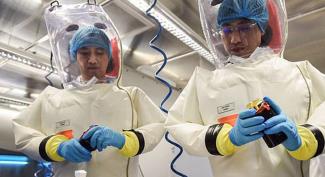It is clear that unless both industrialized and developing nations can effectively control COVID-19, economic recovery will be prolonged. Progressive nations that have "flattened their curves" have employed a combination of home confinement, restrictions on large gatherings, extensive testing with quarantines and tracing, increased social distancing, mandating face masks and promoting personal hygiene and handwashing. It is evident that the most effective programs have owed success to strong central leadership and coordination and also a receptive and compliant population. In contrast, nations without clear directives from the central government, failure to impose national standards for compliance including rigorous testing and quarantine of the infected and tracing of contacts have seen escalating incidence rates and elevated mortality. Premature relaxation of effective control measures if applied, results in resurgence in the incidence rate.
It is axiomatic that learning how COVID-19 emerged and the events and circumstances promoting dissemination of the virus early in the outbreak in Hubei Province in January and February 2019 will be critical to establishing policy and action to prevent the next pandemic. Unfortunately, the current world situation has obscured an understanding of the origin of the infection. Investigating the emergence of COVID-19, that should essentially comprise a disinterested academic endeavor, has been ‘weaponized’ for political purposes. Relevant information has been obscured by injudicious, inflammatory and unscientific political pronouncements and accusations.
 In an attempt to determine facts, the World Health Organization (WHO) from which the U.S. has unilaterally withdrawn, is establishing a program to determine how SARS-CoV-2, the virus responsible for COVID-19, emerged and how it was disseminated. The virus apparently emerged as a clinical entity in Wuhan a metropolis of 11 million in Hubei Province in China during late January and early February 2020.
In an attempt to determine facts, the World Health Organization (WHO) from which the U.S. has unilaterally withdrawn, is establishing a program to determine how SARS-CoV-2, the virus responsible for COVID-19, emerged and how it was disseminated. The virus apparently emerged as a clinical entity in Wuhan a metropolis of 11 million in Hubei Province in China during late January and early February 2020.
John Cohen writing in Science on July 10th established the questions that must be addressed in understanding the origins of the infection.
- Were the U.S. 2018 warnings concerning defects in the maximum-security Wuhan Institute of Virology laboratory valid and was coronavirus research conducted in the laboratory?
- Did the Wuhan Institute of Virology conduct "gain-of-function" experiments to develop a strain of coronavirus transmissible among humans?
- What experiments conducted at the Wuhan Institute of Virology may have contributed to an accidental release of SARS-CoV-2 virus as has occurred with diverse human and animal pathogens from many prestigious facilities.
- Is there any Provincial or Central epidemiologic information or clinical or other diagnostic evidence that COVID-19 was present in Hubei prior to December 2019?
- What was the role of Wuhan Seafood Market in the emergence and dissemination of COVID-19?
- Could examination of any stored sewage samples from centers in Hubei Province from late 2019 (if available) indicate the presence of SARS-CoV-2 virus?
- Could evaluation of data relating to serum surveys be correlated with the presence of bat-related coronaviruses in humans, livestock and wildlife? A comprehensive and ongoing study on bats conducted by Eco-Health Alliance and funded by NIH was cancelled by the White House in April
- Have phylogenetic analyses been conducted on stored sera of humans, their pets and on wildlife been conducted to establish how the virus evolved and the temporal relationship with the emergence of COVID-19 including the early cases diagnosed in Wuhan and other hospitals in Hubei and adjoining provinces? There is considerable evidence that SARS-CoV-1 responsible for SARS in 2004 was present in humans and animals before the emergence of the infection. Antibody surveys implicated civets as an intermediate host between bats and humans with SARS and dromedary camels with MERS.
- What evidence supports the contention that authorities in China or in Wuhan were reluctant to report the existence of an emerging infection to the WHO and as a corollary was there an inappropriate response by the WHO on the basis of the information received?
 Answers to the series of questions will obviously not be resolved in a single interaction between international epidemiologist and their counterparts in China. Establishing an impartial investigation and determining the scientific facts involved in the emergence of COVID-19 may not be helpful in controlling the present outbreak, but it will most certainly help in identifying and controlling the next pandemic. We have endured SARS, MERS, Nipah and Hendra viruses, Ebola, H5N1 avian influenza, H1N1 human influenza and now COVID-19 over the past two decades. The next pandemic is probably developing in some species somewhere in the world as this editorial is posted. Let us hope with the knowledge gained from an impartial scientific review we will be better prepared to respond and that we will be able to detect and confine a regional outbreak before it becomes a pandemic.
Answers to the series of questions will obviously not be resolved in a single interaction between international epidemiologist and their counterparts in China. Establishing an impartial investigation and determining the scientific facts involved in the emergence of COVID-19 may not be helpful in controlling the present outbreak, but it will most certainly help in identifying and controlling the next pandemic. We have endured SARS, MERS, Nipah and Hendra viruses, Ebola, H5N1 avian influenza, H1N1 human influenza and now COVID-19 over the past two decades. The next pandemic is probably developing in some species somewhere in the world as this editorial is posted. Let us hope with the knowledge gained from an impartial scientific review we will be better prepared to respond and that we will be able to detect and confine a regional outbreak before it becomes a pandemic.